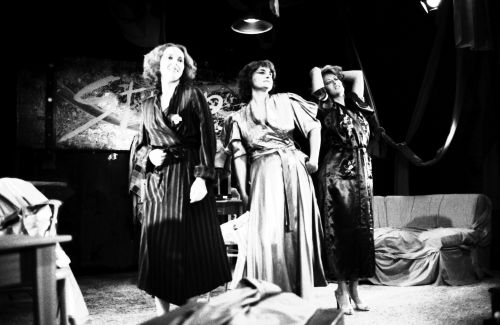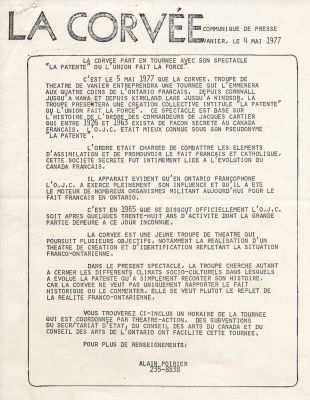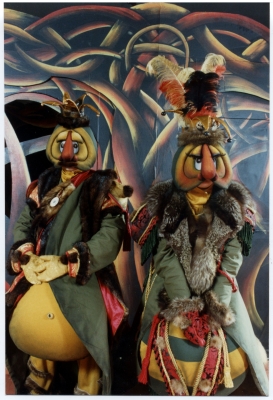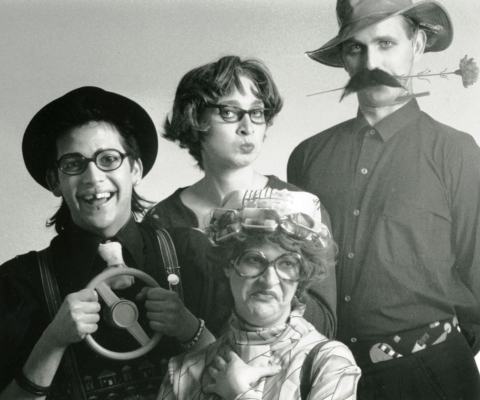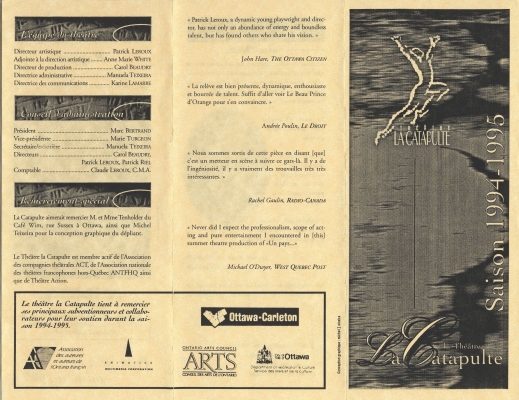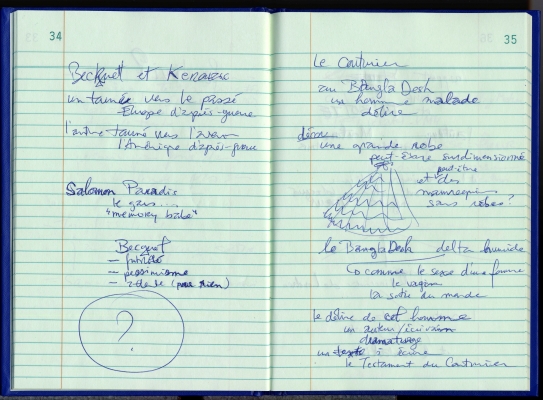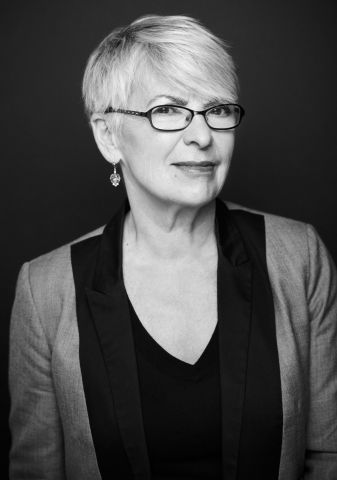Ottawa’s theatre scene engages mostly in repertory theatre until the 1970s, when this trend reverses. The decade between 1975 and 1985 marks the emergence of Franco-Ontarian groups inspired to produce creative works. Following the lead of the Théâtre du Nouvel-Ontario, established in Sudbury in 1971, these new theatre companies troupes adopt a collective mode of operation. Most are engaged in the community, where they often practice interactive radical theatre: in addition to joining their audiences in church basements, community halls and gymnasiums, they reach out to them in public spaces. All in all, their goal is to create theatre for and by the region’s Francophones.
The first of these troupes is the Théâtre d’la Corvée, founded in Vanier in 1975 by a collective composed of Daniel Chartrand, André Legault, Jean-Marc Leclerc and Luc Thériault. Its first intervention activity, L’annonce faite à Vanier, reflects its political, even Marxist, mandate. To raise awareness of the condition of disadvantaged populations, the actors deliver their performance on route 7 buses in Vanier! In January 1976, they prepare a fifteen-minute intervention, L’hiver show, in support of workers on strike at the E.B. Eddy factory in Hull. Until the 1980s, the Théâtre d’la Corvée is a semi-professional theatre troupe: previous acting experience is not required. What counts is a commitment to the troupe’s mission, along with Franco-Ontarian origins.
The second of these new theatre companies is the Théâtre d’la Vieille 17, founded in 1979 in Rockland, east of Ottawa, by Robert Bellefeuille, Charles Castonguay, Jean Marc Dalpé and Lise L. Roy. Together they stage the play Les murs de nos villages, bearing the same title Dalpé gives to a collection of poetry he publishes in 1980. Like the Théâtre d’la Corvée, the Théâtre d’la Vieille 17 seeks to reflect its community and encourage political engagement – specifically to defend the rights of Francophone minorities and support the demands of workers. In 1984, the troupe moves to Ottawa to benefit from professional infrastructure.
The 1980s, however, bring an end to populist and popular theatre in Ottawa – as indicated by the name changes adopted by the companies, who both drop suggestions of oral French. The Théâtre d’la Vieille 17 becomes the Théâtre de la Vieille 17. The Théâtre d’la Corvée similarly becomes the Théâtre de la Corvée. Later, it undergoes another name change which abandons any reference to its social mandate, yet incorporates a symbol which still places it in a Franco-Ontarian context: Théâtre du Trillium. From that point on, the two companies are more interested in artistic creation than political intervention; they stage productions that explore new aesthetics.
This more artistic approach has already been taken by the Théâtre le Cabano, founded in 1979 by Lucie Desjars, Luc Dorion, Marie-Thé Morin and Pier Rodier. This company’s name change to Compagnie Vox Théâtre in the late 1980s reflects its penchant for musical theatre, which it produces mainly for young audiences. In 1992, another theatre focused on exploring aesthetic practices is added to the Ottawa drama scene: the Théâtre la Catapulte, created by Patrick Leroux, Patrick Riel, Carole Beaudry and other artists. This company seeks to enable a new generation of artists to carve out a place for themselves on Ottawa’s theatre scene.
These four theatre companies, which turn professional over time, soon rally around a common project: creating a theatre that offers permanent facilities, and promotes collaboration between drama troupes. The dream finally comes true in 1999, when La Nouvelle Scène opens its doors in the heart of downtown Ottawa on King Edward Avenue.
Rehearsal of the play Strip, by the Théâtre d’la Corvée, September 14, 1982. Photo: Michel Lafleur, Le Droit.
University of Ottawa, CRCCF, Fonds Le Droit (C71), Ph92-4-140982-THE.32.
